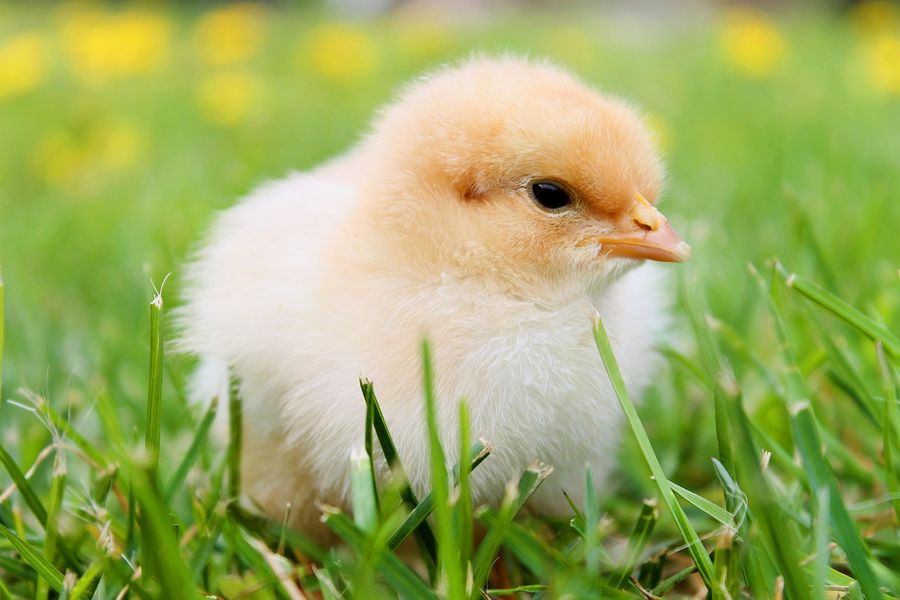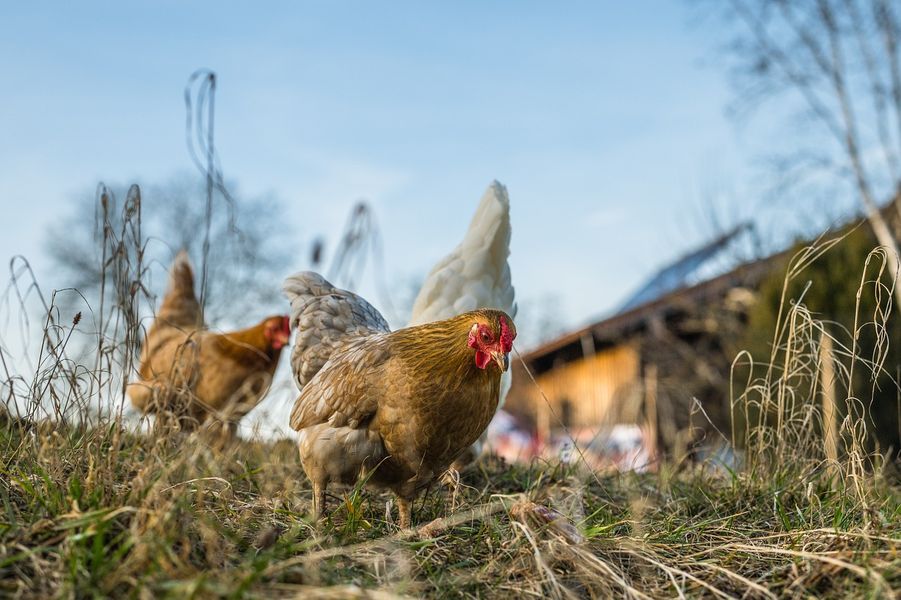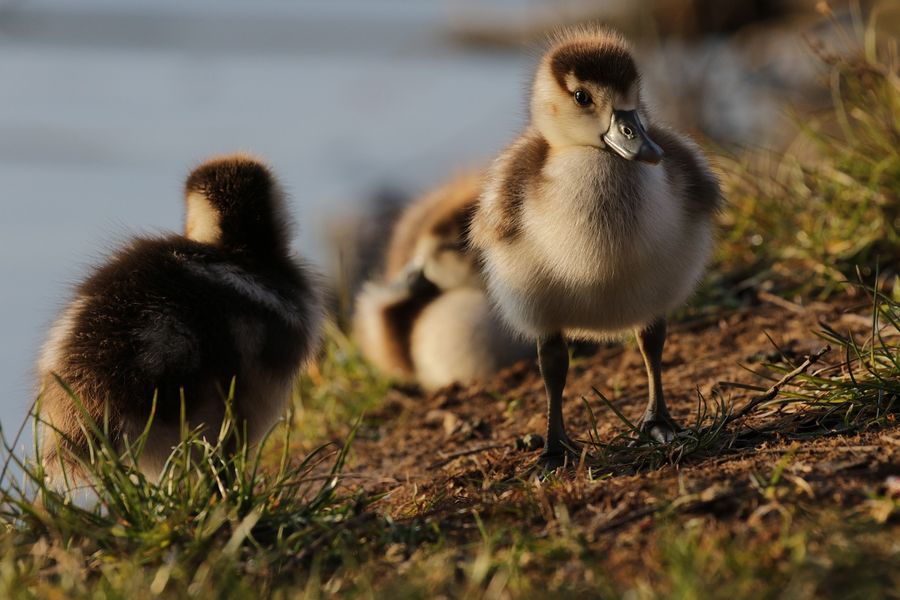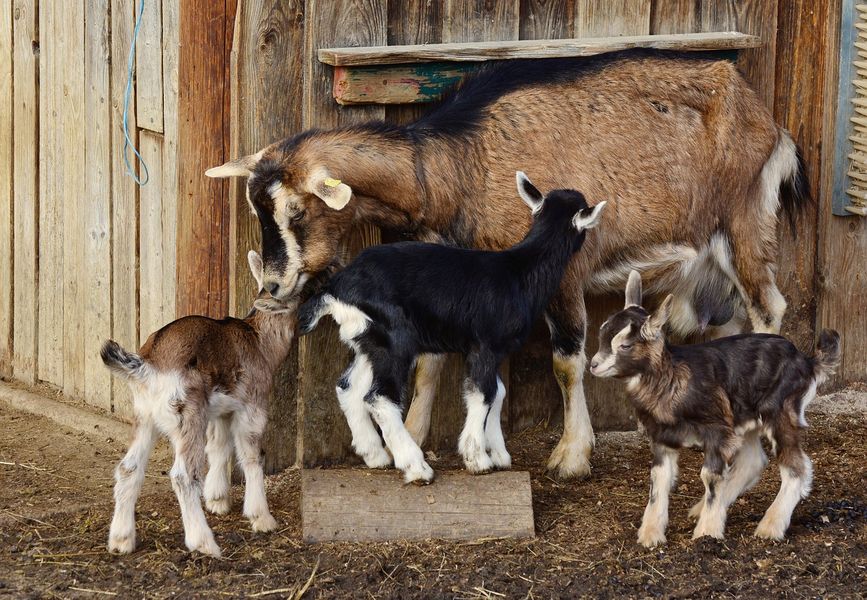For aspiring farmers, hobbyists, or anyone considering a more self-sufficient lifestyle, the idea of raising livestock often begins with one crucial question: Which animals are the easiest to keep? But “easy” can mean different things depending on your goals, environment, and level of experience. Raising livestock isn’t just about putting animals in a pen, feeding them and enjoying their company or the product they can produce — it’s about matching your resources and skills to the right species.
When we talk about the “easiest” livestock, we’re considering a blend of practical factors: How much space do they need? Are they affordable to feed? Do they require complex housing or expensive infrastructure? How hardy are they when it comes to health and climate? What might be manageable for a well-equipped homestead could be overwhelming for someone with limited space or no previous experience.
Let’s break down the concept of “easiest” by examining key factors — from space and nutrition to housing and disease resilience — and provide a realistic look at which animals truly suit beginner-level farming.
Main Takeaways
- “Easiest” Is Contextual: What qualifies as easy livestock depends on your space, budget, climate, experience, and goals (e.g., eggs, meat, milk, fibre, or companionship).
- Key Factors That Determine Ease:
- Space Requirements: Smaller animals like chickens and rabbits need less room and are easier to accommodate.
- Feed & Nutrition: Species that thrive on simple, commercially available or home-grown feeds are easier to manage.
- Housing & Infrastructure: Animals needing minimal, low-cost shelters (e.g., coops, hutches) are better for beginners.
- Health & Hardiness: Disease-resistant and climate-adapted breeds reduce the need for intensive care and vet costs.
- Top Beginner-Friendly Livestock:
- Chickens: Low space needs, simple diet, reliable egg production, and great for families.
- Rabbits: Quiet, clean, fast-reproducing, and with small housing needs.
- Ducks: Dual-purpose (eggs and meat), good for pest control, and hardy in various climates.
- Goats: Versatile and hardy but require strong fencing and parasite management.
- Quail: Great for very small spaces, fast-maturing egg layers.
- Bees: High reward (honey, pollination), but require safety gear and periodic inspections.
- Success Depends on Good Practices: Choosing hardy breeds, maintaining clean housing, and meeting basic behavioural needs (like dust baths for chickens or chew toys for rabbits) makes livestock care much smoother.

Photo By: Philipp Kleindienst
What “Easiest” Livestock Means
First of all, we need to agree on what it means when we talk about livestock that can be easily kept.
There are several parameters that can be used to explain this concept, but all the factors must be contextualised according to the type of farming you have, skills and resources.
Space Requirements
One of the factors is the space that a group of animals may need.
Livestock species differ markedly in the minimum space they need for movement, rest, and natural behaviours. Space allowances are often based on allometric scaling—relating body size to floor area—but also must account for species-specific behaviours (e.g., dust-bathing in poultry or foraging in ruminants).
- For growing pigs, scientifically derived minimum space allowances range from 0.30 to 0.65 m² per head or more, depending on weight class, with welfare benefits plateauing beyond these thresholds.
- Cattle finishing systems typically allocate 35 ft² (≈3.25 m²) per head in bedded‐pack barns to ensure comfort and efficient weight gain.
- Space guidelines for poultry recommend 2–4 ft² (0.19–0.37 m²) per bird in non–cage systems to allow full expression of wing-flapping and dust-bathing behaviours.
But just remember, these are only the minimum requirements studied for the purpose of food production and maximising welfare and productivity. The more space you can allocate, the better for your animal.
Feed & Nutritional Needs
The complexity and cost of feeding livestock depend on the digestive type (monogastric vs ruminant) and production goals (meat, eggs, milk, fibre).
Monogastrics like chickens and pigs require formulated concentrates rich in energy and amino acids, with feed costs often representing 60–70% of total production expenses.
Ruminants can utilise forage but may need grain supplementation to meet growth or lactation targets; precision‐feeding systems are improving efficiency by tailoring diets to individual requirements, thereby reducing waste and cost.
Overall, easier species are those whose diets can be met with commercially available complete feeds or home-grown forages without complex ration balancing.
Housing & Infrastructure
Initial investment and ongoing maintenance of housing vary widely across species.
Simple coops or hutches—requiring minimal framing, roofing, and predator‐proofing—are sufficient for small fowl or rabbits, whereas cattle and larger ruminants demand more substantial barns or shelters with robust ventilation and manure management systems. A cost-benefit analysis of welfare improvements shows that reconfiguring pens and investing in basic enrichment (e.g., perches for poultry) yields high returns in health and productivity at relatively low cost for small species. Comparative studies of tie‐stall versus free-stall housing for dairy cows highlight that free stalls—while requiring more initial capital—reduce labour and improve cow comfort over time.
Health & Hardiness
Disease management and environmental resilience are other critical aspects for beginners to understand when designing their farms and keeping livestock.
Species and breeds with strong innate disease resilience require fewer veterinary interventions and are more forgiving of management errors. Reviews of disease resilience include selective breeding and vaccination protocols as the most important to implement in maintaining herd health, with resilient stock showing less performance decline under disease pressure. Hardy breeds adapted to local climates reduce costs associated with heating, cooling, and shelter modifications.
Top Easiest Livestock
Chickens

Photo By: Munzelminka
Why They’re Easy
Non-cage systems for keeping birds, like chickens, take up a small amount of space—only about 2 to 4 square feet per bird. This setup allows the birds to move naturally, flap their wings, and enjoy activities like dust bathing.
When it comes to their diet, feeding them a commercial layer mash provides all the nutrients they need. Plus, many chickens happily eat kitchen scraps as extra treats!
Basic Requirements
- Housing: A well-ventilated, predator-proof coop fitted with nesting boxes ensures safety and encourages regular laying.
- Feed: Mature layers typically consume about ¼–½ lb (115–230 g) of layer feed per bird each day.
Pros & Cons
- Pros:
- Steady egg production: Commercial layers can produce 250–300 eggs annually after reaching maturity.
- Child-friendly: Gentle breeds (e.g., Rhode Island Red) make chickens great for family projects.
- Cons:
- Routine cleaning: Coops require regular bedding changes and sanitation to prevent ammonia buildup.
- Predator vigilance: Foxes, raccoons, and birds of prey necessitate secure enclosures.
Beginner Tips
Opt for traditional chicken breeds: Consider hardy varieties like Rhode Island Reds. These resilient birds are not only well-suited to handle fluctuating temperatures, but they also forgive the occasional mistakes made by new chicken keepers, making them an excellent choice for beginners.
Create a dust bath: Set up a shallow container filled with soft sand or dry soil. This simple yet effective setup provides your chickens with a bathing spot, allowing them to roll and fluff their feathers. The dust bath helps control pesky mites while ensuring your chickens’ plumage stays healthy and clean.
Rabbits

Photo By: Andreas Raben
Why They’re Easy
Compact housing is highly suitable for rabbits and can provide them with a secure and comfortable living environment. Standard hutches, typically measuring around 0.75 m² in floor area, can accommodate one or two rabbits, especially when coupled with regular and engaging exercise periods that allow them to stretch their legs and explore.
Basic Requirements
- Housing: A well-ventilated hutch elevated off the ground to deter predators and moisture.
- Feed: Unlimited high-quality hay plus roughly ¼ lb (115 g) of commercial rabbit pellets per adult daily.
Pros & Cons
- Pros:
- Quiet, low odour: Proper ventilation and clean bedding keep hutches virtually odour-free.
- Rapid reproduction: Does can give birth every 8–10 weeks, yielding 6–8 kits each time.
- Cons:
- Coccidiosis risk: Young rabbits require seasonal monitoring and potential prophylactic treatment.
- Chewing hazards: Wire-floor hutches necessitate chew toys to prevent pododermatitis and boredom.
Beginner Tips
Keep males and females apart: To avoid having unexpected baby animals and to reduce fighting, it’s important to manage which animals breed together.
Provide fun activities: Giving animals things like cardboard tubes and safe wooden blocks encourages them to chew and keeps their minds active.
Ducks

Photo By: Andreas Glöckner
Why They’re Easy
Weather conditions can be managed effectively, allowing for optimal duck foraging in shallow water. This foraging behaviour not only lowers overall feed costs but also enhances the natural enrichment of their environment.
Basic Requirements
- Housing: Simple shelter with a ramp or gentle slope leading to a puddle, pond, or shallow tub for swimming.
- Feed: Starter crumbles (20–22% protein) for ducklings transitioned to grower pellets; supplemental greens and foraged insects can diversify their diet.
Pros & Cons
- Pros:
- Dual-purpose: Many breeds yield both eggs (up to 200 annually) and flavorful meat.
- Pest control: Ducks consume slugs, snails, and insects in garden areas.
- Cons:
- Moist droppings: Require more frequent bedding changes to maintain dry conditions.
- Water management: Stagnant pools can harbour pathogens if not refreshed regularly.
Beginner Tips
Use nipple drinkers: Keeps water sources cleaner and reduces the risk of wet litter.
Provide shallow pools: Even a simple kiddie pool promotes natural behaviours and hygiene.
Honourable Mentions
Goats

Photo By: Congerdesign
Hardy browsers and versatile milk producers but require robust fencing and targeted parasite control (e.g., Haemonchus contortus management) to maintain herd health.
They are not the easiest to create a good feeding plan and can be very destructive to trees.
Quail
Game birds are an excellent choice for those looking to maximise space, as they require only about 2 square feet (0.19 square meters) per breeder when housed in pens. Additionally, these birds mature quickly, with layers beginning to produce eggs at around six weeks of age.
Bees
High-reward pollinators, such as honey bees, play a crucial role in our ecosystem and agriculture as effective honey producers. It is essential for beekeepers to utilise protective gear, including a full suit, veil, and gloves, to ensure safety while managing these insects. Conducting seasonal inspections can help monitor and address issues related to swarming and disease, promoting healthier colonies and more productive yields.
Conclusion
Raising livestock can be a deeply rewarding step toward greater self-sufficiency, but success starts with choosing the right animals for your situation.
The “easiest” livestock are not universally the same—they’re the ones that align best with your available space, time, budget, and level of experience.
Small animals like chickens, rabbits, and ducks stand out as excellent entry points thanks to their manageable housing needs, straightforward feeding, and forgiving nature. They offer a gentle learning curve while still providing valuable returns in the form of eggs, meat, or natural pest control.
Understanding key care requirements—like space, nutrition, infrastructure, and health—can help you make informed decisions that minimise stress and maximise sustainability.



